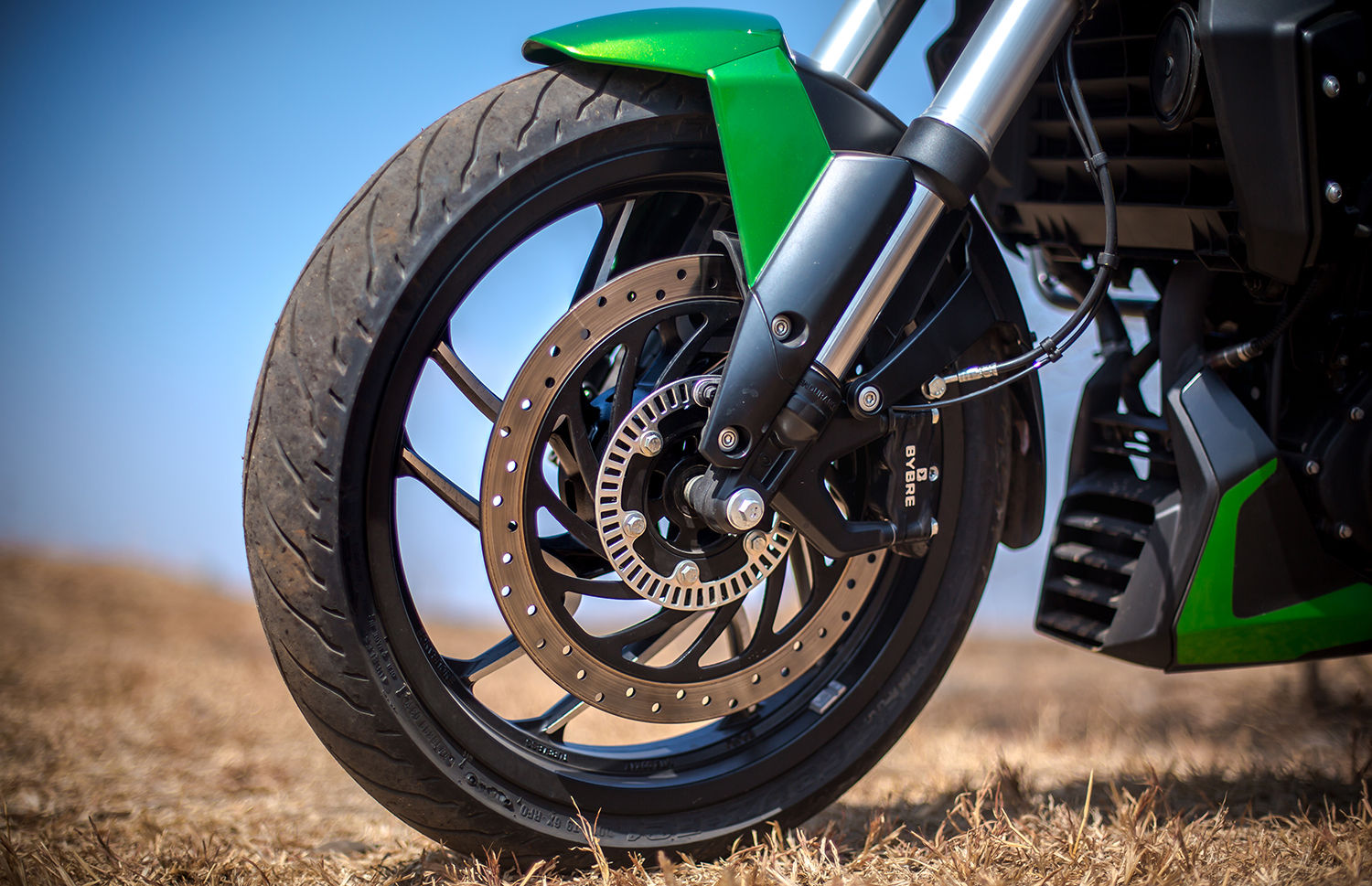USD fork vs Telescopic Fork: Differences Explained
Modified On Mar 11, 2019 12:16 PM By Gaurav Sadanand for Bajaj Dominar 400 (2016-2018)
- 16762 Views
- Write a comment
Let’s take a closer look at what sets them apart and which one’s a better choice

Ever wondered why some bikes are equipped with conventional telescopic forks while the others get upside down forks? First and foremost, let's get the differences out the way. A fork comprises of a spring and a damping unit inside. Here, the springs act as a compression unit while the dampers, with the help of oil, control its velocity. In essence, both telescopic forks and USD forks have almost similar working components. Despite this, the latter receives more preference over the former. The origin of USD forks dates back to the late 1980s when race teams turned the fork upside down to improve handling.

However, does repositioning of a fork really make a world of a difference? Well, it doesn’t! In fact, it all just boils down to how rigid one is from the other. During braking or turning, the fork, which acts as a lever, undergoes some serious stress, especially the portion under the triple clamp or yoke. To elaborate, when you apply the front brake, it’s the front wheel that comes to a stop. The entire mass of the bike, on the other hand, comes to standstill only because it’s attached to the fork which holds the wheel.

In a telescopic fork, the chrome part (stanchion) is positioned at the top and held together by a triple clamp while the slider (female portion) sits at the bottom. Turn the entire assembly over and you have an upside-down fork, where the slider sits up top, braced by the triple clamp, and the stanchion is positioned below. Needless to say, the section which undergoes the most amount of stress needs to be strong, and a fatter diameter fork is the best solution. A USD fork works perfectly well in this senario. Since the fork assembly is essentially turned upside down, the slider now connects to the triple clamp. It’s also longer compared to conventional telescopic forks. As a result, it provides more support. It’s also less likely to flex under hard braking or turning speeds. Thanks to this, bikes with USD forks handle better and provide better feedback.

Additionally, damping cartridges on USDs are slightly better than the damping rod seen on telescopic forks as the damping or spring action is less progressive. The difference extends even further in terms of a fully adjustable USD fork which uses more complex internal parts. This enables the rider to adjust compression, rebound and damping by tinkering with the adjuster placed on top to suit his/her riding style. However, it does have its drawbacks as USD forks are a lot more tricky to work with and disassembling them is a task. On the contrary, conventional telescopic forks are easier to work with due to their basic architecture, be it changing the oil seals or just taking it all apart.

Another advantage of having telescopic forks is that the the slider stays away from all the dirt and grime thrown from the wheels since it’s positioned further up top. However, it’s the complete opposite in case of USD forks. Also, in case of an oil seal leak on a USD fork, the oil is likely to trickle onto your braking components, which is extremely risky. On the flipside, an oil leak on a telescopic fork will only ooze down the slider. Agreeably, there’s still a lot more that goes into how the two types of forks work. Rest assured, we will cover them soon. So, stay tuned to BikeDekho.
